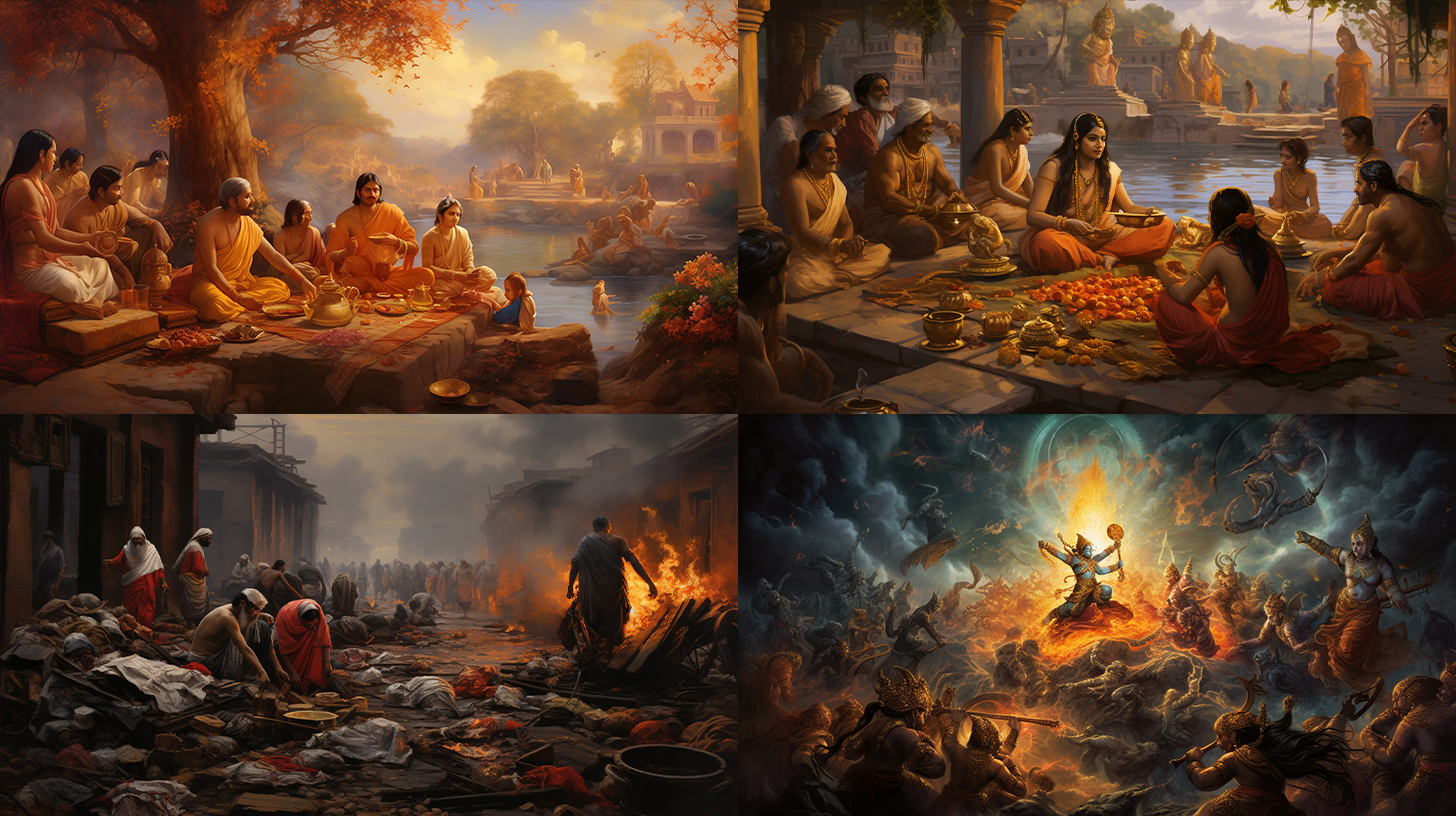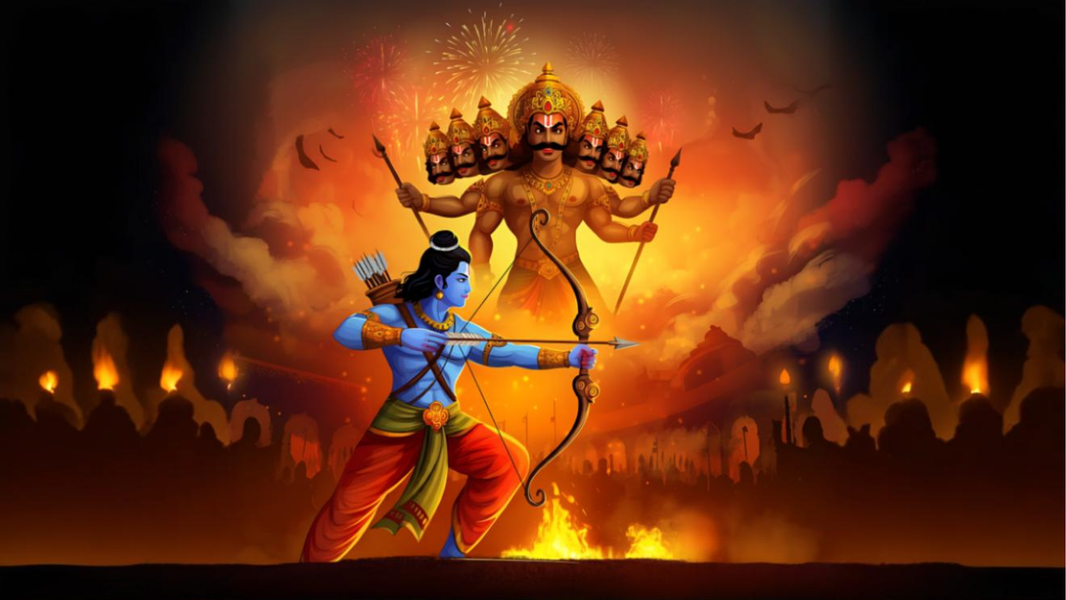The Timeline of the Yugas as per the Purānas
Time is known as kālā and the syllable ‘kā’ refers to expansion of the universe and ‘la’ refers to ‘laya’ or contraction or reaching the place from where the things came.
The word ‘yuga’ is derived from two roots, ‘yu’ -’to join’ and ‘ga’- ‘ to move’. Time flows and joins all incidents and phenomena in the universe.
The Purānas refer to the Yuga as the "Ages of Time”. It is a framework that describes the cyclical nature of time and the evolution of human consciousness. According to this framework, time is divided into four distinct Yugas, each characterized by its unique qualities and attributes:
Satya Yuga (Golden Age):
Satya Yuga also known, as Kṛta Yuga is the first and most spiritually advanced of the four Yugas. It is characterised by truth, virtue and righteousness prevailing in society. People in Satya Yuga possess deep spiritual knowledge and lead a virtuous & ascetic life. The average human lifespan is exceptionally long, spanning thousands of years. During this age, humanity is in close communion with the divine and there is little moral or spiritual decay.
This yuga has 17, 28, 000 years
Tretā Yuga (Silver Age):
Treta Yuga follows Satya Yuga and marks a slight decline in spiritual and moral values. While righteousness is still prominent, there is a gradual decrease in people's adherence to truth. Rituals & sacrifices become more elaborate and spirituality becomes more ritualistic. Human lifespans decrease significantly compared to Satya Yuga, but they remain substantial. Divine qualities and knowledge are still accessible to many, but there is a growing sense of materialism.
This yuga has 12, 96, 000 years
Lord Rama came in this era to prevail over evil.
Dvāpara Yuga (Bronze Age):
Dvapara Yuga witnesses a further decline in moral and spiritual values. People's focus shifts more towards material pursuits, and rituals become even more complex. There is a noticeable decrease in human lifespans, with people living hundreds of years. Conflicts & wars begin to emerge and societal divisions become more pronounced. Knowledge of the divine becomes scarcer and spirituality becomes more ritualistic.
This yuga has 8, 64,000 years
Lord Krishna was born in this period to vanquish the oppressors.
Kali Yuga (Iron Age):
Kali Yuga is the final and darkest of the four Yugas.
It is characterized by a profound decline in virtue, righteousness and spirituality. Materialism, greed and selfishness dominate society, leading to widespread moral decay. Human lifespans are significantly reduced, with people living only a few decades. Conflicts, deceit and dishonesty become widespread, causing suffering and chaos. In Kali Yuga, people's connection with the divine is severely strained and spiritual knowledge is scarce.
This yuga has 4, 32, 000 years
Lord Kali will manifest to conquer the forces of darkness.
The total of these four yugas equals 43, 20, 000 human years (manuṣya varṣa), which is called ‘one Catur Yuga or Mahā Yuga’.
72 Catur Yugas 43,20,000 x 72 = 1 Manvantara
14 Manvantara = 1 Kalpa (one day time of Lord Brahmā)
Another 14 Manvantara = one night time of Lord Brahmā
28 Manvantras = 24 Hours of Lord Brahmā
1000 Catur Yugas = 1 Kalpa = 4.32 billion solar years
360 x 2 x100 = Kalpas = lifetime of the Creator, Lord Brahmā
The Yugas follow a cyclical pattern, with each Yuga succeeding the other in the above order. After the completion of the Kali Yuga, the cycle begins anew with the advent of the Satya Yuga. This framework serves as a symbolic representation of the rise and fall of human consciousness and values throughout the cosmic ages.
Glossary
Purānas - Puraanas
Kālā - Kaalaa
Kṛta - Krita
Tretā - Tretaa
Dvāpara - Dvaapar
Manuṣya - Manushya
Varṣa - Varsh
Mahā - Mahaa
Brahmā - Brahmaa







